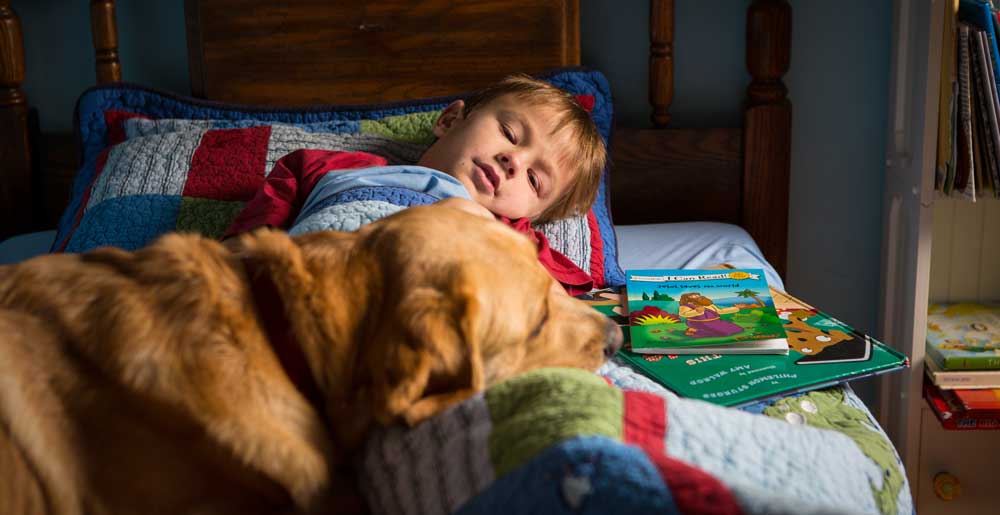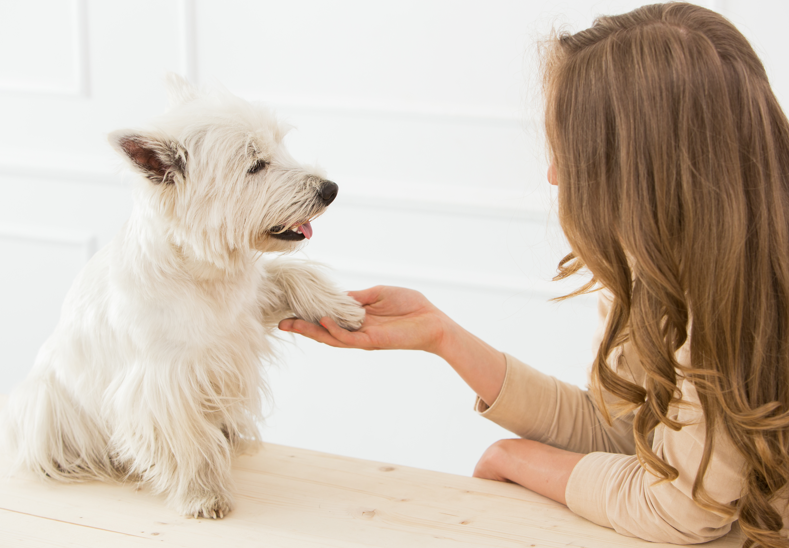
Dogs are very intelligent and sensitive creatures who can pick up on the fine nuances of our tone, body language, emotions, and attitude. The way we communicate with our paw friends is crucial for establishing a strong bond with them, that relies on trust and mutual respect.
Needless to say, proper communication with our furry friends can serve as a good model for children to look upon and learn how to interact with them respectfully.
Do Dogs Understand What We Are Saying?
If you have trained your dog in specific commands and have paired certain cue words with specific behaviors, your dog will understand what they are expected to do when hearing these words, e.g. their name or the commands to sit, come, or wait. It is important to clarify that you can teach your dog to fulfill commands in any language based on your preferences, not English in particular.
If we are talking about standard situations- our furry friends do not understand what we are saying but can pick up on our tone and body language.
Dogs communicate using three types of tones: high-pitched squeals/yelps that show excitement, mid-pitched sounds that reflect calmness and lack of threat, and deep, low growls that are a sign that the dog is warning or threatening. Having said that, your paw friend is likely to understand whether you are praising them, scolding them, or talking neutral based on your pitch.
Our paw friends respond better to humans whose body language is calm and natural than those who seem to be erratic and intimidating. If you learn to send the right signals to your dog through your body language, along with using the right tone, your communication can improve tremendously!
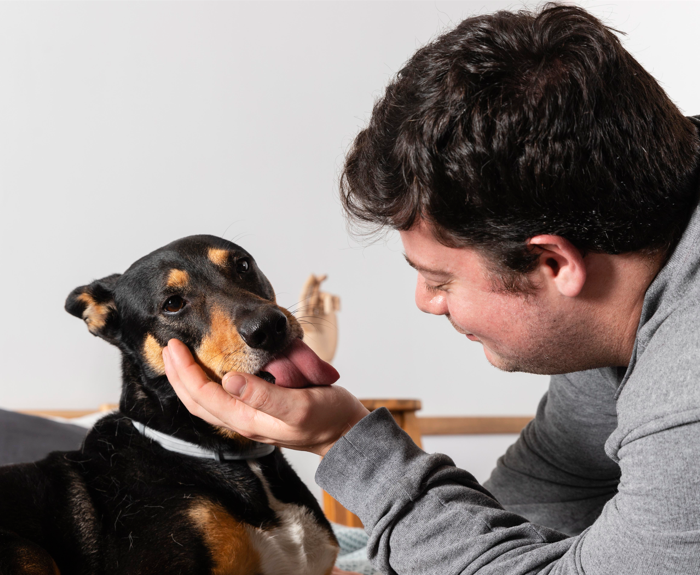
Tips on How to Talk to a Dog Properly
Let’s start with the tips in the context of training.
Short & and Understandable Cue Words
During training sessions, you should choose cue words that are short, easy to pronounce and remember. Once you start pairing them with desired behavior, stick to your choice and don’t change the words throughout the training. This will help avoid confusion. Of course, there are dogs whose owners are bilingual and prefer to train their paw friends to fulfill commands in two languages. This is fine, as long as the use of the cue words and the training sessions are regular and consistent.
Calm & Relaxed Body Posture and Attitude
Try to be as calm and natural as possible when conducting training or interacting with your dog. Our furry friends are emotionally intelligent and can easily recognize any changes in our moods, emotions, and behavior. If you are not feeling up to training, it is better to postpone it for a more convenient time when you have the time and energy for it.
Short & Positive Training Sessions
Keep training sessions short and positive. Do not embark on endless training sessions with your furry friend to compensate for a time when you could not practice with them. A training session should be about 10 min long and should end positively. This means that you should end it while your dog is still enjoying it and will keep a positive attitude toward the training process.
Don’t Repeat Yourself
Last but not least- do not repeat yourself! Yes, sometimes it could be difficult to stick to this tip. However, if you repeat your commands, your dog will learn to wait for you to give them several times before they fulfill them and you do not want that.
If your dog is overly enthusiastic and not focused on you, wait for them to settle before you continue with the training. If your dog ignores you, you can try to get their attention by using treats (a primary positive reinforcement tool), toys, and praise. Additionally, you might want to move to a quieter area with fewer distractions and try to get your dog’s attention again. End the session and reduce the distractions if needed instead of forcing your canine to fulfill the given commands and repeating yourself. We can guarantee you that the second approach won’t bring any results (or at least not positive ones).
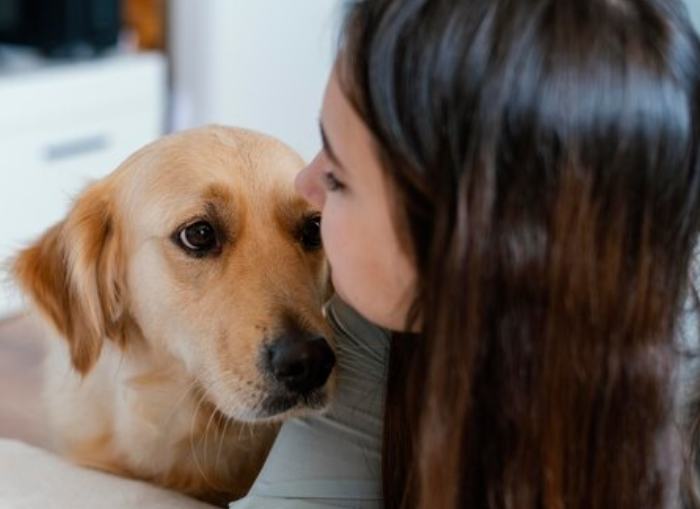
What Shouldn’t You Do When Communicating With Your Dog?
Don’t Use Punishment
Some trainers are still relying on punishment-based methods and training devices such as e-collars to have the dogs in training progress more quickly. Even if your dog learns to exhibit certain behaviors / do specific tasks, they won’t feel motivated to do it but rather be afraid of the punishment they will receive if they do not do the task.
Since dogs are our loyal assistants, who provide us with love and comfort, we would highly recommend that you opt for positive-based techniques and avoid punishment. Needless to say how crucial the role of service animals is and how important it is for these dogs to remain encouraged and happy throughout the training process.
Don’t Yell at Your Dog
Similar to the point above, you should avoid verbal aggression too! Don’t yell at your dog as this can cause stress and anxiety in them and is very likely to negatively impact your bond. It is understandable to lose your nerves sometimes but the better you can control yourself, the better the relationship with your canine will be. This will in turn have a very positive effect on the training process.
Don’t Be Inconsistent/Inpatient
Practice regularly, stick to the same commands once you start using them, and try to be as patient as possible. Make a schedule for the training sessions, meal times, walks, play sessions, etc., This will have a positive impact on your dog’s behavior.
It won’t do any good to compare your dog with other dogs and the tasks they can or can not perform. Your paw friend is an individual who learns at their own pace. Some tasks might be more difficult to be taught than others and this is normal. If they struggle with some tasks, try to reduce the distractions in their environment, and reward them with treats of a higher value (to motivate them). Take a break from a certain task, if needed, and return to it, after several days or weeks when you and your furry friend feel ready for it.
Don’t Neglect / Ignore Your Dog
As loving and caring dog owners we should not only care for the physical health of our paw friends and make sure that their basic needs are met but also pay attention to their emotions and overall well-being.
Dogs “talk” to us through different types of vocalization and their body language, so we should try to properly interpret what their “signals” mean based on the situation and environment.
Don’t ignore signs of stress, fear, or reactivity, should you notice any of these. Learn to recognize the triggers in your dog’s environment and remove/avoid them if possible, If this is not possible or if you are looking for a solution in the long term, you should train your dog to accept the stimuli and change their attitude toward them. Desensitization and counter-conditioning are effective training methods that can be particularly useful.
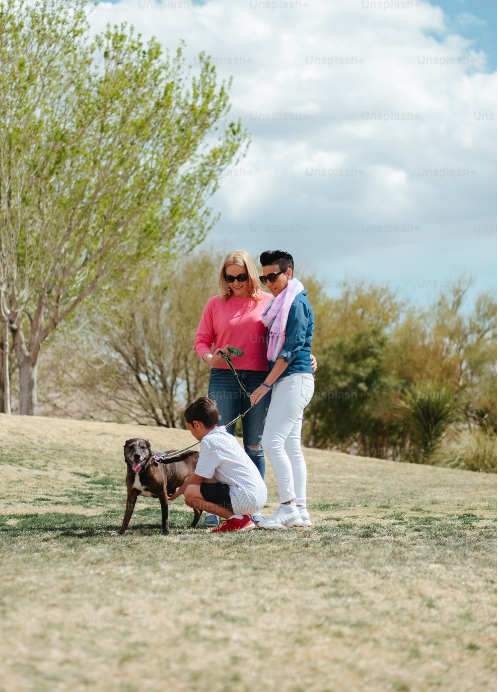
Most Common Mistakes We Make When Interacting With a (Unfamiliar) Dog
Trying to Pat Them on the Head
Although dogs are cute just like small children and we instinctively want to pat them to show them how much we like them, we should not do that! This is especially valid if you approach an unfamiliar dog. There is a high likelihood of misunderstandings to occur, which might cause fear, stress, or reactivity in the dog.
What to Do Instead?
Stay still and let the dog sniff you first to get familiar with your scent. After that, you can slowly and gently reach your hand, with the palm facing down, so that your fingers are protected, so that the dog can sniff it.
If the owner permits, you can gently scratch the doggo on the side of their neck (ensuring the dog can see where your hand is) or the front chest area.
Bending Over a Dog
Avoid bending over a dog in a way that makes your posture look intimidating. The canine might perceive this as a sign of domination which can cause different responses from them. The dog might become frightened, fearful, or even aggressive.
What to Do Instead?
Simply allow the dog to get closer to you on their own, especially if it is an unfamiliar dog. If possible, kneel a bit so your height level is closer to the dog’s height. Leaning over a dog is likely to be perceived by them as a sign of dominance or a way to challenge them which can cause frustration and a negative response.
Trying to Kiss/Hug a Dog
Some of you may feel lucky to have a cuddly paw friend at home who adores giving kisses and hugs. That’s wonderful!
However, imagine how an average dog would perceive your attempts to hug them and kiss them. It looks quite intimidating for a living being double their size to try to grab them, doesn’t it? Not to mention that children are very likely to look upon that approach and try to implement it themselves when interacting with a dog.
What to do instead?
Similar to the cases above, be respectful of the dog and don’t try to force them into physical contact if they are not up to it, especially if you don’t know the dog well and can not predict their reactions. However, the same is true for our pets at home, as we don’t want them to see us as a threat.
Starring at a Dog
Staring at a dog the first time you meet? Don’t get off on the wrong foot!
If you stare at a dog, there is a big chance for this behavior to be perceived as a challenge or threat.
What to do instead?
Slightly turn your head or try to wink slowly, not to stare, and give the dog a chance to approach you on their own, once they feel confident that you are not a threat.
Communicating with our paw friends is a joyful experience that helps us deepen our emotional connection with them. However, it also requires consideration and mindfulness, that show our paw friends that we respect them and genuinely love them.




